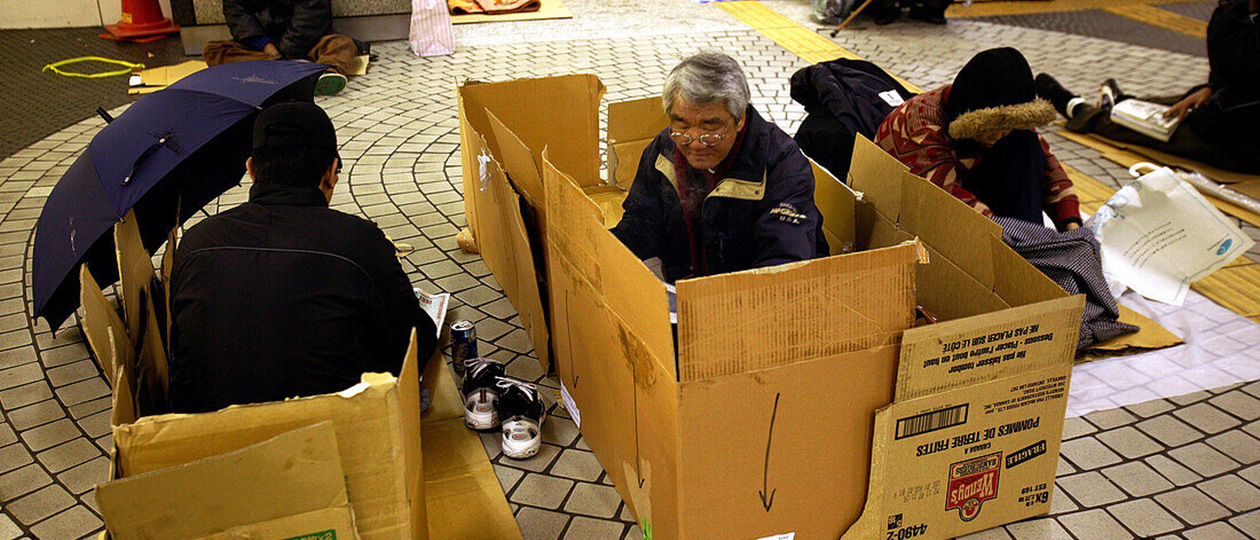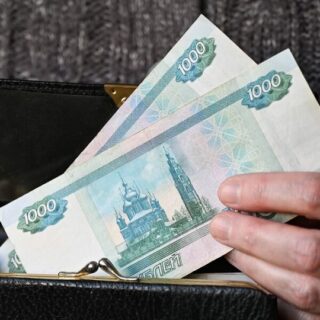
“The streams of the receding river…, they are continuous; but they are not the same, the old waters… Bubbles of foam floating in the backwaters…, they will disappear, then they will reconnect anew; but they are not given to stay for long. In this world, people and their dwellings… and they are like bubbles on water” – Kamo no Chomei (1154 – 1216).
Perhaps, with the exception of Moscow, Tokyo is my favorite city. It looks an equal part as a set of fantastic Japanese cartoons and samurai films.
Its center looks like Times Square multiplied by a thousand. Not in size, but in the abundance of advertising, restaurants, shops, entertainment centers. On the outskirts there are rice fields, quiet residential areas and family eateries.
Everything here is steeped in history. The always rushing crowded central streets suddenly turn into a forest. In the middle of the forest stands a huge Shinto temple. You go into the thicket and you can no longer hear the horns of cars; under the canopy of ancient, immense and wise trees there’s nothing but silence, proud and calm.
The streets of Tokyo are never empty. In the morning there runs a flood of men and women in formal suits and with briefcases, hurrying to their offices. They are gradually replaced by pensioners and young mothers.
A little later, groups of high school students appear: boys in school uniforms, with rebelliously open collars and ties dangling loosely around their necks, girls in gathered knee socks and short skirts.
In the evening, all three of these worlds meet on the streets in search of food and entertainment. But, almost unnoticed, another, fourth one would pass through them. This is the world of the homeless.
It appeared suddenly, as a result of the Big Economic Bang – the collision of Japan and globalization. In the 80s, the economic “bubble” burst. Unlike children’s soap bubbles, this one was no laughing matter. Many people suddenly found themselves unemployed.
Globalization bit into society with a death-like bite, like a rabid dog on a passerby’s leg. Previously, construction workers and computer scientists earned the most.
Suddenly, their jobs sailed away from the shores of Japan and moored in Indonesia, China, and other countries where the professionals were paid less.
For several months, it was possible to live on savings. Then the work did not return, and the money ran out. No one wanted to hire the unemployables.
In the 90s, the economic situation continued to change for the worse. On the surface, everything remained the same – the same cleanly washed streets and expensive cars. However, if in the 80s such a huge metropolis as Tokyo had practically no homeless people, then from 1993 to 2003 their number reached six thousand.
Someone may object that this is not a large number. Indeed, today in 128-million Japan there are approximately twenty-five thousand homeless people.
In 300-million America – about 672 thousand. However, for traditional Japan it was a shock. It was extreme and strange. The first reaction of Japanese society was denial; the housed citizens simply tried not to notice the homeless.
At all times there were people who wanted to live in the streets by choice, but they were few and far between. It was hard to believe that suddenly it became a reality for those who themselves would never agree to homelessness willingly.
The homeless went to the parks, building themselves their own small “towns” from cardboard boxes and “roofs” made out of blue polyethylene.
Even in this terrible situation, they remained quiet; they kept their “apartments” clean. Entering them, you had to take off your shoes – just like in real Japanese houses.
Every day the homeless people sweep their “homes” and beat out the mattresses. There are practically no alcoholics and drug addicts or people with mental illnesses.
According to the latest research, their number is only about 10-15% of the total number of homeless. In America – 66%.
Despite all hardships, the homeless people remain “samurai”. They read and discuss books while picking up beer cans. They hang on their “walls” the reproductions of paintings they found in the garbage, making a small “café” for themselves.
They come to their “cafes” in the evening, after collecting the surrounding garbage. The cooks, who have lost their jobs, prepare delicious dishes from what is at hand. They rarely use scraps. Actually, they rather disdain them.
They grow their own vegetables, rice and fruits – often, more fortunate Japanese let them use their land for growing produce. Therefore, the food is good, without chemical additives.
It is strange, but in all their interviews, they empathize that they are happy.
“I have never worked in the garden. It turned out to be very interesting,” says one. “Our fruits are much tastier than those I used to buy in the supermarket,” says another. “Come here, look at what a huge turnip I grew, just like in your Russian fairy tale!” — This homeless professor of Russian literature calls me over.
There is another factor. If in the USA McDonald’s throws away all of their unsold sandwiches, in Japan fish and other products are given to the homeless. In return, they sweep the restaurant or help with the housework.
Life is hard, but they do not try to blame the government for their misfortunes. They only blame themselves. “We lived wrong and we paid for it,” – this is what many say. “We should’ve put money in the bank and spent less, but we wanted to live our lives “in luxury”, so here’s the result.”
And almost all of them say:
“We would really like to find a job.”
Although weddings do happen in these small homeless towns, the main population is 55-year-old male bachelors. Employers trust them the least – they can suddenly break down or quit because nothing holds them back.
They, in the opinion of many, have no desire to ever learn any new skills and they are very stubborn. Japanese companies prefer to get rid of this “dead weight”.
Here we should also mention the Japanese way of renting an apartment. It is not as easy as it seems. To move in, you have to pay for the first and last month of the year, plus an extra month’s rent “just in case” and another one “for the keys”.
That is, you actually have to pay for four months. You also need to buy a refrigerator, a washing machine and an air conditioner. Not everyone has that kind of money.
In addition, the Japanese are very big “bureaucrats” in our understanding of the word. They need a lot of certificates from work, phone numbers of friends and previous apartment owners. Rest assured – they will definitely call them and find out why you are moving out. In short, renting an apartment in Japan is not as easy as it seems.
Now imagine that you don’t have one. More so, there are no savings left. You have been unemployed for six months. Still, the landlady demands payment. You hide from her, like Raskolnikov, but she is relentless. One unfortunate day, a policeman comes around and drags your things out into the street: “Sayonara!”…
And here you are – evicted, poor and unsheltered. It’s terrifying. That’s how a vicious circle begins. You can’t rent an apartment but every job requires a residence certificate (a government issued record of current address).
The difference between Japan and America and modern Russia is that it’s not only the victims who understand this “horror”, but everyone else does, too. The “community”, which liberals have been laughing about for so long, does not allow us to forget this. “We are all of one blood. You and I.”
As a way to help, small businesses allow the homeless to indicate THEIR address, so that it is easier for them to find work.
In large cities, a movement is organized to help those left without means to exist:
“We are a wealthy nation, but we pretend we don’t notice our poor. They are trying their best to get a piece of bread, not by begging in the streets, but though their honest work. They work every day. Can’t we protect them, help them? How long will we pass by?”
And people were heard!
Initially, they looked into the methods of their “big brother” – the USA – for a solution. Following their example, small shelter-hostels for the homeless were built. Few people wanted to live in these shelters. There was a shortage of space, it was difficult to sleep in cramped conditions, and no help was offered in finding an apartment or a job.
After a couple of years, it became obvious that the American model was not working.
Private individuals sometimes helped as much as they could, for example, by giving away land that they did not use. Several funds were also created to help the homeless. However, all of these actions weren’t enough.
The Tokyo municipality decided to implement its own plan to help the homeless. They managed to enlist the support of local administrations in 23 Tokyo districts. This program for “returning the homeless to society”, as it was advertised, became the first one to operate on a national scale.
The plan was as follows. Five so-called “self-sufficiency centers” (“Jiritsu Shien”) were created. They welcomed and registered everyone wishing to leave the street, get a second chance at a normal life, find an apartment and a job.
After the clients pass medical, psychological and professional tests, they are divided into several groups. All those who can live independently and have a chance at getting a job were supposed to be given apartments subsidized by the Tokyo Metropolitan Government. Initially, it was planned to rent out about 2 thousand apartments.
The monthly rent that a previously homeless person would have to pay was 3 thousand yen or about 25 dollars a month. The Tokyo Metropolitan Government was supposed to find apartments for the homeless, the rent for which would be from 40 to 50 thousand yen ($350-400) per month, based on the market price. The entrance and everything else would be paid by the city authorities. Later, the Tokyo government paid for the building of several housing complexes for the same purpose.
For two years, the city administration was obliged to subsidize these apartments. In the first year, 380 million yen (or slightly more than 3 million dollars) was allocated for these purposes. In total, more than 600 million yen (5 million dollars at the exchange rate at that time) was spent.
The homeless people were also given one-time assistance for the purchase of suits to attend interviews, home improvement and other essentials.
Immediately after moving to a new apartment, the municipality was obliged to provide everyone with temporary work for six months. For example, former homeless people were hired to clean up trash, guard public places, etc. According to the employees of the social security bureau of the capital’s municipality, all these measures should help people prepare themselves for independent living and create conditions as close as possible to their previous normal life.
Together with non-governmental organizations, special companies were organized to help the previously unhorsed population in finding new jobs.
The second group is formed by sick, old or disabled people. They are entitled to social insurance (“seiakatsu hogo”). Social workers at the center help them with getting it. After the request is reviewed and satisfied, the applicant is given a bonus of 80 thousand yen. This is quite enough to rent an apartment and basic necessities like food.
The third group includes those who for some reason have no desire to get a job. They are not entitled to any assistance, but they can stay and live in a shelter.
As soon as the Tokyo Metropolitan Government announced the creation of a new assistance program, many homeless people came to Tokyo from other cities.
As a result, 8,577 people took part in it, of which 4,652 were placed in apartments. Of these, 2,152 people (51%) were able to find work almost immediately.
According to the Ministry of Health, Labor and Welfare, by January 2008 (i.e. in two years) the homeless population of Japan decreased by 27 percent. Considering that the largest homeless population lived mainly in Tokyo and another large industrial Japanese city, Osaka, where today the number of unemployed has grown by several thousand people, it is quite obvious that the main reduction homelessness took place in Tokyo.
Undoubtedly, the problem is yet to be completely solved. The economy is still in a difficult state. The bureaucratic attitude of some municipal employees pushes away some homeless people. Not everyone manages to find a permanent job. Some decide to “earn extra cash” and get precarious temporary jobs, which can lead to homelessness yet again
However, it must be acknowledged that Tokyo’s experience is generally a positive one, and there is much to learn from it. By continuing to develop and expand the program, it may be possible, if not to get rid of the problem completely, then to significantly improve the situation.
“Why do we need to pay for them?!” — an American will ask. But we know why! Because these are strong willed people who never gave up. They didn’t despair. The hardship broke their lives down and turned their reality upside down. But it did not break their spirit.
They survived, they hold their heads high. They did not ask for help, but a wise society gave it. And now they are back on their feet. Is this too much to ask of us?
Look at Russia.
We are fighting, we maintain a huge army — all this is right and necessary, even essential.
But what do we do for the disadvantaged people? For the elderly, for children and women? Nothing. They are provided with a standard set of empty phrases.
And what do we do for men — aren’t they worthy? Those, who grit their teeth and go to work. They groan, but do their job. They protect their family.
Why are we so attracted to the American experience? Why not try something different?
Capitalism, yes… But it’s different everywhere! Why did we need the most cruel form of it? And what do we need it for anyway?!
How could we forget our disadvantaged by simply throwing them handouts? Can’t we do something more for them? Are we that calloused?
You see, there are still societies where people help and trust each other. Why shouldn’t we try?
The Japanese experience teaches us that people can get back on their feet.
We just have to believe them, without throwing away the “it’s their own fault.” Lend them a hand, but not with a crumpled dollar. Give them real, sustainable help.
Yes, Japan is a wealthy country. But don’t many of our problems come from indifference?
We are tired of the thrills, we are sick of the “American roller coaster” – it is time to slow down, look around, find a way out. It is time to leave this carnival and go home.
…I sit down on the worn-out sofa.
“Do you like Dostoevsky?”
“Yes.”
“I learned about him from Kurosawa’s films. I started reading, and it drew me in”.
“I heard that the Japanese translation is not very good, it is hard to read.”
“Yes,” he laughs, “that is true. But it is still impossible to convey feelings in words, no matter how hard you try. I listen to him not with my ears, but with my heart.”
…This is from a conversation I had with one of the homeless people in their “cafe”.





